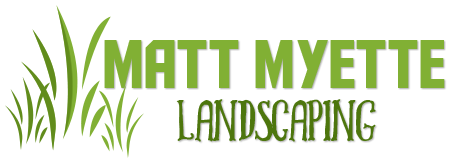With fewer outdoor projects due to weather constraints in Vermont, winter can be a slower time tending to the landscaping. But with frozen ground of the cold weather makes for the perfect conditions to remove buckthorn from Vermont’s native landscape. We at Matt Myette Landscaping would like to discuss removing the buckthorn as part as your winter projects.
Identifying Buckthorn
Buckthorn or European buckthorn originated from Eurasia and came to the US in the 1800’s as a landscape plant for hedging. The buckthorn quickly escaped the landscape and began overtaking native woodlands because it lacked natural pathogens and pests in its new North American environment. Common to the locals, buckthorn grows to a mature height of 20′-25′ tall with the trunk’s diameter potentially reaching up to about 10″, but from 1/2″ – 4” is the average. With noticeable lenticels that resemble dashed lines making rings on the tree, buckthorn has a glossy darker brown bark that as it get older the bark looks rougher and even peel a bit much like birch bark. Buckthorn trees tend to form dense tangled thickets crowding out light and holds on to leaves far into fall long after other trees are bare. Because these trees crowd out native understory plants along with other species as well as slow or stop natural forest succession, removing them is optimal. Key to stabilizing forest soils and preventing erosion are the forest floor wildflowers and perennials which will diminish under the buckthorn’s shade.
Buckthorn Removal
Removing the buckthorn in the winter is ideal with known techniques that works with the native landscape and preserves soil integrity. After the buckthorn has been properly identified, professionals can ensure the other vegetation is well preserved. The buckthorn is cut as close to the ground as possible and the cut buckthorn thickets are detangled and placed into piles. With specialized equipment that gently weaves the piles without stressing other plant life, professionals clear away the debris. From there, the buckthorn is often processed into mulch or other such uses after the buckthorn is carefully chipped. Application of specially formulated herbicide requires a licensed professional that uses an oil-carried systemic herbicide to treat the freshly cut stumps. The herbicide is an organic option to pull out the roots of the buckthorn to avoid disturbing any nearby root systems of other trees and plants in close proximity. Pulling stumps is an option, but keep in mind that doing so loosens already fragile soil making erosion inevitable which can cause further stress and damage to other vegetation.
Buckthorn Control & Management
Once the buckthorn is removed and the stump has been treated, buckthorn management continues. Buckthorn is notorious for harboring a large seed-bank. During the growing season of the small buckthorn sprouts will minimize future need of large scale buckthorn removal with the use of ongoing treatment and maintenance. To keep the woodland’s of Vermont replenished with native species, a professional will list options of the different native understory perennials, shrubs, and trees that contribute to the restoration of your native woodlot.
Landscaping, Lawn Services & More in Greater Morrisville, Stowe, Hyde Park, Elmore, Cambridge, Morristown & Lamoille County, Vermont
If you are experiencing buckthorn in your landscaping, call in the professionals of Matt Myette Landscaping for removal and assistance planting exceptional native selections in your lot.








